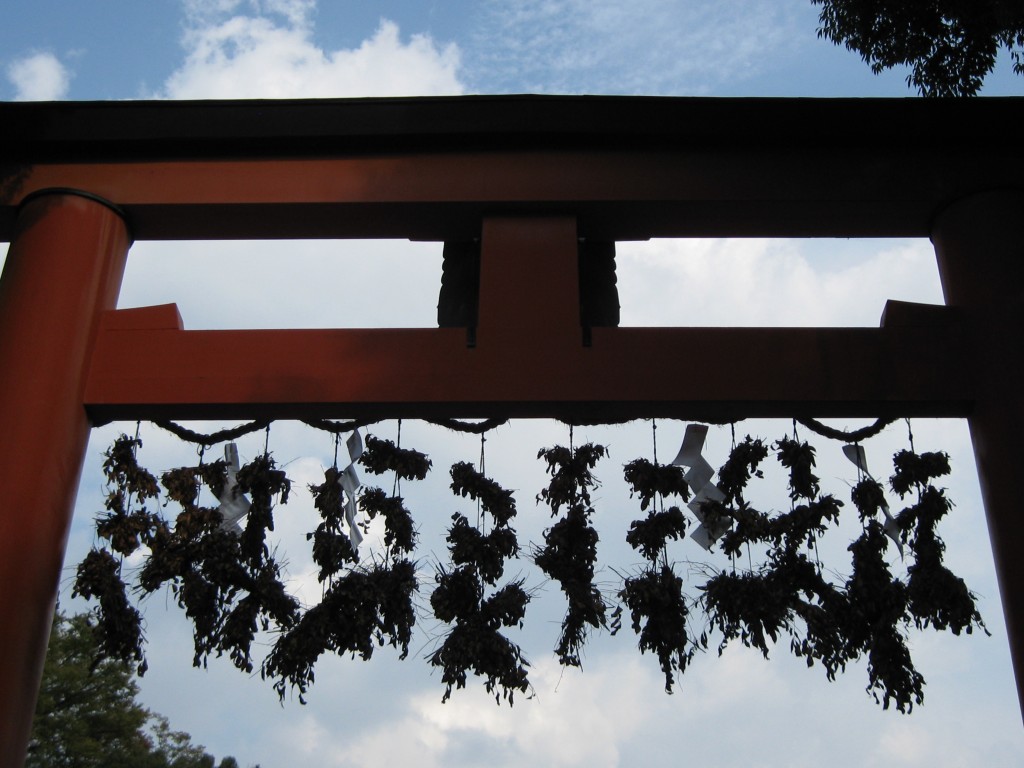
Matsuo Taisha torii, in Kyoto, with hanging sakaki branches
A visit to Matsuo Taisha today, where to celebrate the national holiday there was a saké festival in full flow. There was live music, high spirits and people in their cups. The shrine is noted for its quality of water and saké connections, so it was good to see it being put to proper use.
Entering the precincts I was struck by the unusual torii, with withered sakaki branches hung upside down from the shimenawa. A noticeboard nearby claimed that this may have been how early torii looked, with twelve sakaki branches suspended from a sacred rope.
Really, I thought to myself? First time I’ve heard that… my idea of early torii is of a shimenawa slung between two poles or sakaki/bamboo branches. So I couldn’t help wondering where the shrine had got its idea from… Next time I go to Matsuo Taisha – and it’s worth multiple visits – I’m going to ask the priests about it. The shrine claims to be the oldest in Kyoto, along with Kamigamo Jinja, with worship on the hill behind it dating back to the fourth century or beyond. Perhaps they know something we don’t…
Afterwards I climbed the hill behind the shrine to visit the sacred rock (iwakura) where worship at this site originated. It encapsulated everything I love about the essence of Shinto: awe, mystery and a sense of the divine in nature. When i get a moment, I’m going to post about it…

It’s also a shrine closely associated with the Hata clan, who were, of course, immigrants (probably from the Korean peninsular). It may well have been founded in its current form by that clan, just like Fushimi Inari. Non-Japanese participation in Shinto is not new, although there may have been something of a hiatus.